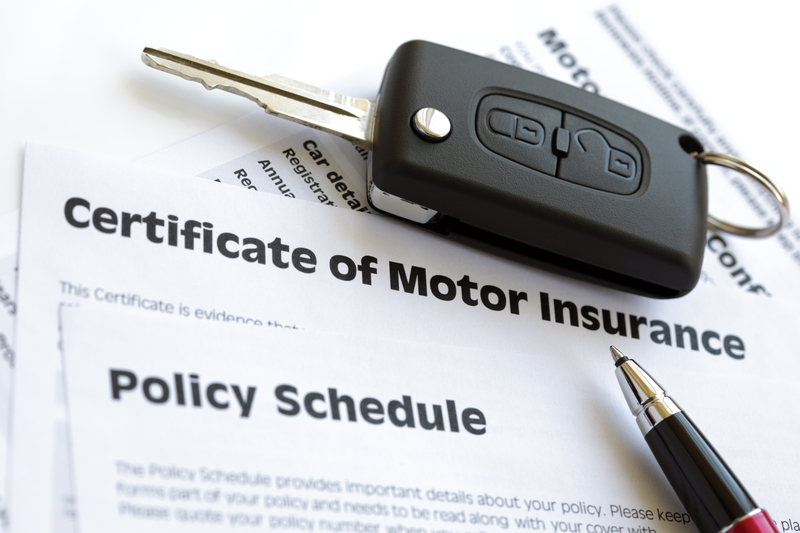Key Steps to Store Your Idle Freezer Efficiently
Posted on 18/05/2025
Key Steps to Store Your Idle Freezer Efficiently
Do you have an extra freezer sitting idle in your garage or basement? Are you considering storing it away for several months or longer? Handling an unused freezer might seem simple, but improper storage can lead to odors, mold, deterioration, or costly repairs. This comprehensive guide explores the essential and best practices to store your idle freezer efficiently--ensuring it stays in excellent condition and is ready for future use.

Why Properly Storing Your Unused Freezer Matters
Freezers are significant investments for homes and businesses. Whether you're upgrading, downsizing, or just need to store your spare appliance, following freezer storage steps can dramatically prolong the appliance's lifespan. Improper storage may cause:
- Mold and mildew buildup due to trapped moisture and lack of airflow.
- Unpleasant odors that can be difficult to remove later.
- Rust or corrosion of internal and external parts.
- Damage to seals, hinges, and internal components from long-standing inactivity or improper positioning.
This makes it crucial to understand every step needed for efficient idle freezer storage.
Essential Steps to Store Your Idle Freezer Properly
1. Unplug and Safely Disconnect the Freezer
- Shut off the power supply and unplug your freezer from the outlet. This is the first and most vital step to prevent electrical hazards and conserve energy.
- If your freezer is hardwired or part of a larger appliance, follow the manufacturer's instructions for a safe disconnect.
2. Remove All Contents
- Empty the freezer completely. Remove all food, trays, baskets, and shelves.
- Check every compartment to ensure nothing is left behind, as leftover items can spoil and cause damage or odors.
3. Thoroughly Defrost the Freezer
It is crucial to defrost your freezer before storing it for any significant period.
- Leave the freezer door open after unplugging to allow any built-up ice to melt naturally.
- Place towels or a shallow pan underneath to absorb dripping water.
- Never use sharp tools to chip away ice, as this can damage your appliance.
- For faster defrosting, you can place a pot of hot (not boiling) water inside and close the door for a short while, checking periodically.
4. Deep Clean and Sanitize the Interior
One of the best idle freezer storage tips is to ensure your unit is impeccably clean before long-term storage.
- Wash all interior surfaces (walls, shelves, drawers, rubber gaskets) using a solution of warm water and mild dish soap.
- For stubborn stains or odors, mix a solution of baking soda (2 tablespoons per quart of water) and gently scrub.
- Remove and separately clean all removable parts. Let them dry thoroughly before reinsertion.
- Optional: Use diluted vinegar to sanitize surfaces and neutralize lingering smells.
- Dry all surfaces completely--moisture left behind is the primary cause of mold during idle storage.
5. Clean the Exterior and Coils
- Wipe down the exterior using a damp cloth and mild detergent. Don't forget the door seals and hinges.
- If accessible, vacuum or brush dust from condenser coils at the back or underneath to prevent long-term accumulation.
- Inspect for rust or cracks, and treat any affected areas according to the manufacturer's recommendations.
6. Ensure Thorough Drying
- Place the freezer in a well-ventilated area with the door ajar, allowing any residual moisture to completely evaporate.
- This step may require several hours or even overnight, but it is vital for preventing microbial growth or rust.
7. Prevent Odor and Mold Growth
- Place an open box of baking soda or a commercial moisture absorber inside the freezer to trap odors and excess moisture.
- Charcoal packs or a few pieces of crumpled newspaper can also help absorb smells, ensuring your idle freezer remains fresh.
8. Secure the Doors (But Leave Them Slightly Open)
- Never store a freezer entirely closed. Trapped air and residual dampness can result in severe mold and odor issues.
- Wedge the door open using a rolled towel, rubber door stop, or through manufacturer-supplied spacers to allow airflow without risking damage to the door hinges.
9. Identify a Suitable Storage Location
Where you place your freezer during idle periods is just as important as how you prepare it for storage.
- Choose a dry, cool, and well-ventilated area--preferably indoors (basement, utility room, or climate-controlled garage).
- Avoid direct sunlight, high humidity, freezing temperatures (which can crack plastic components), and dusty environments.
- Leave space (at least a few inches) between the freezer and any walls for additional airflow.
10. Prevent Rodent and Pest Intrusion
- Check surrounding areas for rodent/pest activity and address any gaps, holes, or nests.
- Keep the immediate area clean to avoid attracting pests, which can chew wires or build nests in the appliance.
11. Protect Cords and Mechanical Components
- Coil and secure the power cord to avoid tripping hazards or stress on connections.
- Place the cord on top of the freezer or inside a plastic bag, taped securely to the side.
- If your freezer has a water/ice dispenser, follow the manufacturer's instructions for draining lines and components safely before storage.
12. Shield the Freezer from Damage
- Cover the freezer loosely with a breathable sheet or tarp to protect it from dust and scratches.
- Do not use plastic wrap or airtight covers, as these can trap moisture and encourage mildew.
- Label the freezer as 'Out Of Service' to prevent accidental use or rough treatment by others.
Long-Term Idle Freezer Maintenance Tips
If you plan to store your unused freezer for more than a few months, it's wise to check it periodically:
- Inspect for odors, mold, or moisture inside and wipe out as needed.
- Refresh the box of baking soda or moisture absorber every couple of months.
- Ensure the door remains ajar.
- Check for rodent coverings or dust accumulation.
- Keep the storage area itself clean and dry.
How to Reactivate a Stored Freezer
When you're ready to use your freezer again, follow these steps to safely restart your stored freezer:
- Remove covers and any moisture or odor absorbers.
- Inspect the interior and exterior; wipe down if needed.
- Ensure the power cord and components are undamaged.
- Plug the freezer into a grounded outlet and allow it to run empty for a few hours before reloading.
- Reinstall all cleaned shelves and drawers.
- Add items only once the freezer has reached the desired cold temperature.
Common Mistakes When Storing an Idle Freezer
Avoid these errors to keep your idle freezer safe and functional:
- Skipping defrost and cleaning before storage.
- Leaving the unit in a damp or poorly ventilated spot.
- Storing with the door completely closed.
- Forgetting to protect against rodents and pests.
- Using non-breathable plastic covers or tarps.
- Ignoring periodic maintenance during extended storage.

Extra Tips for Commercial Freezers
Storing idle commercial freezers--such as those in restaurants, shops, or laboratories--requires additional care:
- Follow all manufacturer protocols for decommissioning and storage to maintain your warranty.
- More frequent checks may be necessary when storing high-capacity or walk-in freezer units.
- For freezers with complex controls or programmable electronics, ensure all settings are off and batteries (if present) are removed during storage.
- If moving, secure doors with special brackets and consult professional transportation services.
Conclusion: Efficient Idle Freezer Storage for Longevity and Safety
Efficiently storing your idle freezer is not just about turning it off and pushing it aside. By following these key steps for proper idle freezer storage--defrosting, cleaning, drying, ventilating, and protecting--you safeguard your investment and avoid future headaches. Whether your freezer will be idle for weeks or many months, proactive care ensures it remains in optimal working order, ready for its next service.
If you want your appliance to run for years to come, never overlook these essential idle freezer storage practices. Share these tips with friends or colleagues to help everyone enjoy lasting cold storage, with fewer repairs and better food freshness.





